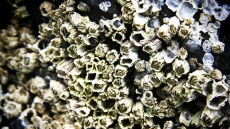Creating highly purified crystals to make high-powered lenses, specialised optics and computers for consumers can no longer be a difficult and expensive method.
Researchers at Princeton and Columbia universities have used a new method to grow these specialised materials, known as photonic crystals, with ease.
"Our results point to a previously unexplored path for making defect-free crystals using inexpensive ingredients," said Athanassios Panagiotopoulos from Princeton University.
The researchers proposed that photonic crystals could be created from a mixture in which particles of one type are dispersed throughout another material.
Called colloidal suspensions, these mixtures include things like milk or fog. Under certain conditions, these dispersed particles can combine into crystals.
Essentially, the researchers showed that adding precisely sized chains of molecules - called polymers - to the colloid mixture allows them to impose order on the crystal as it forms.
"The polymers control what structures are allowed to form," added lead author Nathan Mahynski, a graduate student in chemical and biological engineering from Princeton University.
If you understand how the polymer interacts with the colloids in the mixture, you can use that to create a desired crystal, he noted.
Changing the polymer affects which crystal form is most stable. As the crystal forms, the polymer helps set the crystal's shape, the study suggested.
"The polymer and the crystal work like a lock and key - they fit together in the crystal structure," said the study published in the journal Nature Communications






